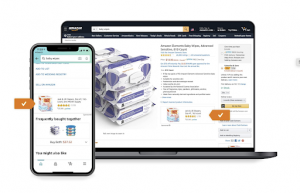Digital marketers are trained to make optimization decisions based on data and analytics. We optimize our ads to improve click-through rate, we optimize our landing pages and keywords based on conversion rates, and we optimize our budget allocation based on attributed revenue and ROI. Digital marketers also like to live in absolutes where our data sets match across tools. But as the digital landscape evolves our analytics are no longer linear and, as a result, our measurement strategies are having a hard time keeping up with the digital evolution.
And this means we’ll need to evolve our measurement strategy.
The Digital Landscape Is Quickly Evolving
Consumers today are shopping, researching, and engaging with brands via multiple devices and multiple channels. Google research has showcased the evolution of consumer digital behavior:
- 51% of smartphone users have discovered a new company or product when conducting a mobile search.
- 87% of consumers do research before entering a store.
- US retailers see 16% more search ad conversions when cross-device data is included.
It seems logical that digital marketers should be connecting the dots across every channel and every device. But in the same study, Google found that 40% of enterprise business still use a historical measurement strategy, such as first- or last-touch attribution.
We Need to Evolve Our Measurement Strategy
It’s easy to get stuck in our normal routine of measuring a linear path to conversion. Ad impressions, clicks, and conversions result in data and analytics we can easily make optimization decisions from. It’s what digital marketers historically have been able to use and it’s absolute. So when we go into our executives’ offices to discuss digital campaign performance, we feel confident in our data delivery and the performance metrics we tell our executives regarding digital success.
However, with the evolution of our digital landscape, the measurement strategy we have historically used is no longer absolute. And most of us have not yet adopted a robust multi-channel attribution tool that gives us the customer’s complete path, including every touchpoint and engagement of a customer journey.
We diligently research articles and attend educational conferences to try and find the best analytics solution that covers cross-device, offline, and cross-channel. While there are a variety of products promoting a solution, marketers often experience hiccups, the tools are too expensive, they take to long to implement and ramp up, or they don’t encompass every data point.
It’s a frustrating problem – I know. I have been living in this world for the past few years and, while I don’t have a perfect solution, I refuse to end up in analysis paralysis or give up and resort back to the tried and true first- or last-touch attribution models.
Don’t Wait for a Perfect Measurement Solution
We have a challenge: the customer path to purchase has evolved but we still aren’t able to measure the full journey. This means our optimization strategies are off and we can’t provide our executive team with a solution or timeline for a solution. So, what should we do next?
Start. Measuring. Whatever. You. Can. Today. Now. Don’t. Wait. For. Perfect. Data.
Put together every analytics tool you have measuring your customer journey. For me, this includes Google Analytics, DialogTech’s Voice Management Platform (VMP), and Salesforce.
Google Analytics measures the touch points made up until a lead becomes known. DialogTech’s VMP tracks every phone call back to the digital source and device, and ties in the customer journey. And Salesforce is where we host all of our customer and revenue information. Together, these three tools give me a complete data set, measuring online as well as offline phone calls to understand our customer’s journey cross-device and cross-channel all the way to the point of a sale.
My next step is to assign a unique identifier to every customer and pass that unique identifier through Google Tag Manager, DialogTech’s VMP, and Salesforce. That way, when I measure how we acquired a new customer I have an identifier bringing their journey together from multiple tools.
It’s not a perfect solution and I continue to experiment every day to make it a bit better. But it is a starting point as I continue to evaluate additional tools to bring into my marketing stack. I focus on the metrics that matter to our business, including revenue. And while I still battle with not having my analytics in absolute, I have more confidence in how I allocate our media budget day to day.
Digital & Social Articles on Business 2 Community(26)





